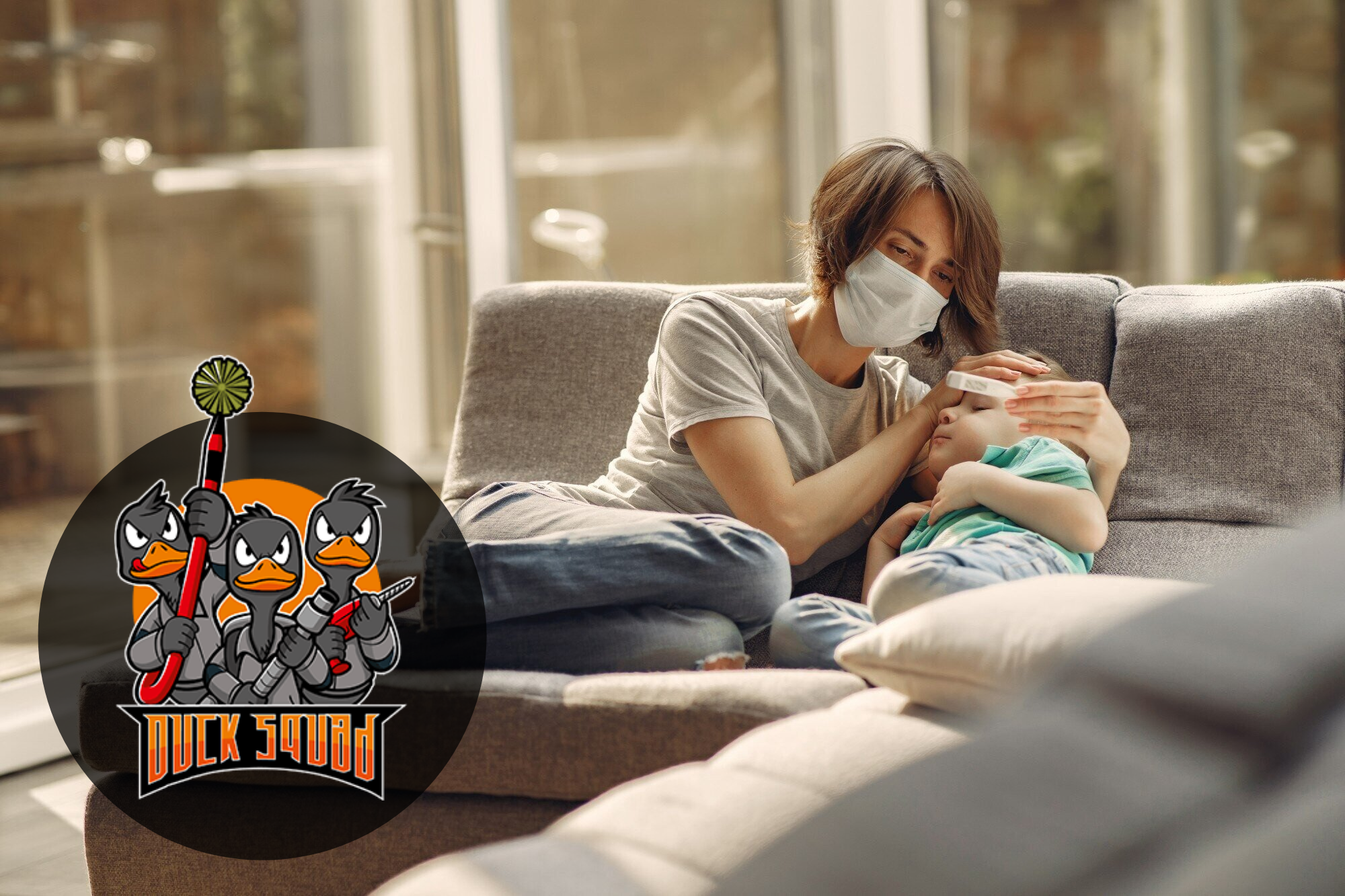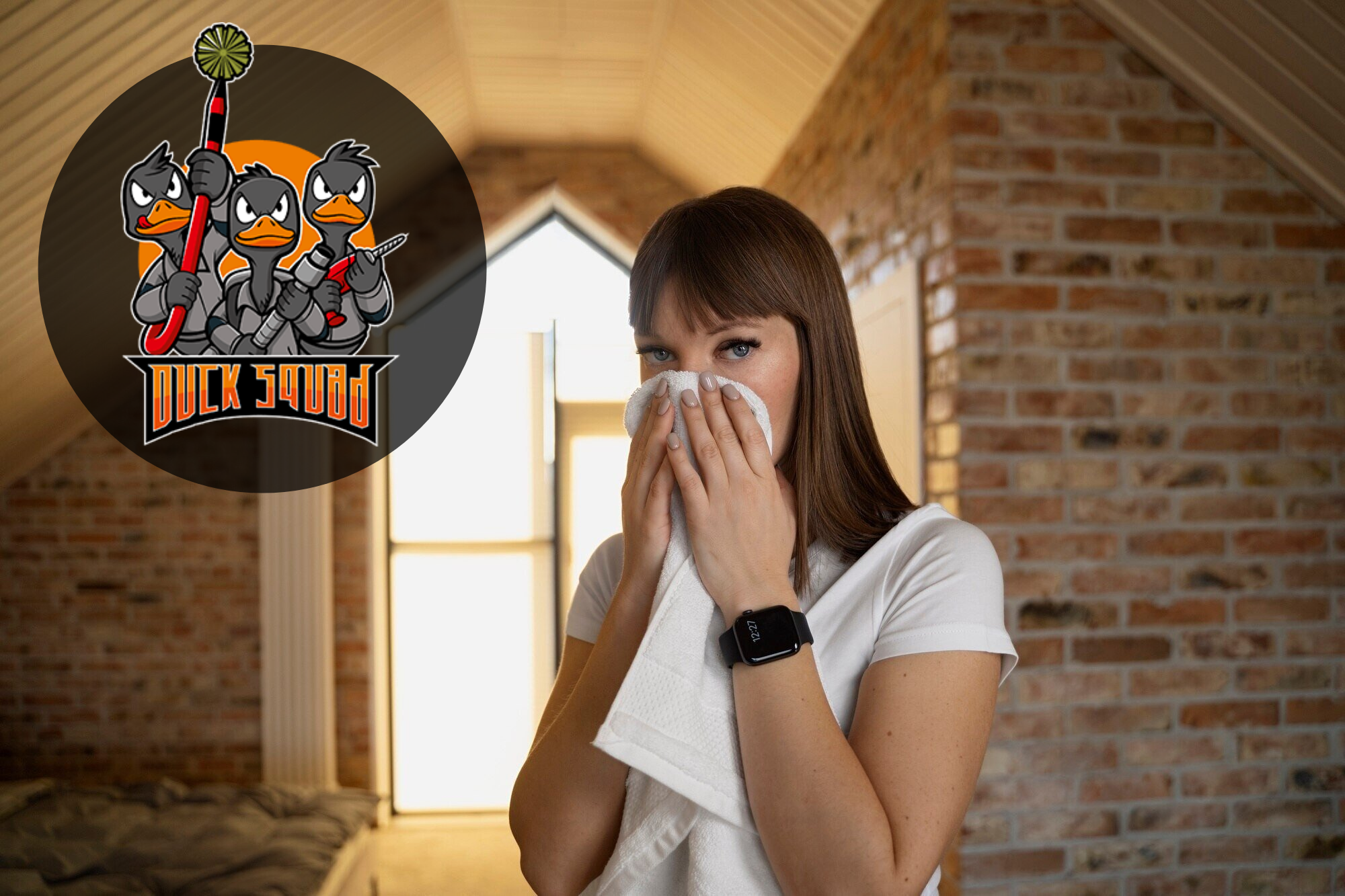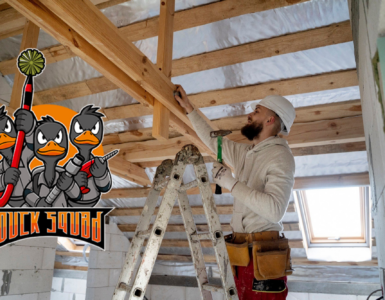Maintaining healthy indoor air quality is essential for both residential and commercial properties. It’s not just about feeling comfortable—it’s about safeguarding the long-term health of everyone who spends time inside your space. Whether you’re a homeowner concerned about your family’s well-being or a business owner responsible for your team and customers, air quality should be at the top of your safety checklist.
The Hidden Risks of Poor Indoor Air
Poor air quality isn’t just a matter of discomfort; it can escalate into a serious health hazard. Contaminants such as dust mites, mold spores, volatile organic compounds (VOCs), pet dander, and chemical fumes can silently circulate through your air system, triggering allergies, asthma, and other respiratory conditions. In some cases, exposure to indoor pollutants may even contribute to chronic illnesses or exacerbate existing conditions like heart disease and lung disorders.
Unseen, But Not Harmless
The trouble is, many homeowners and business owners don’t realize there’s a problem until symptoms begin to surface. Headaches, fatigue, throat irritation, or persistent coughing are often misattributed to seasonal changes or minor colds. Meanwhile, the root cause—contaminated indoor air—continues to compromise your environment day after day.
Many air quality emergencies stem from sources that are difficult to detect without professional help, such as carbon monoxide leaks, off-gassing from new building materials, or biological pollutants hiding within HVAC systems. This makes awareness and proactive monitoring essential to preventing serious consequences.
Your First Line of Defense: Awareness and Action
This guide will help you identify the warning signs of an air quality emergency and outline the proactive steps you can take to protect your home or workplace. From simple adjustments like improving ventilation and using air purifiers to more advanced interventions like professional inspections and HVAC maintenance, every measure counts when it comes to breathing safer air.
Healthy indoor air isn’t a luxury—it’s a necessity. And with the right tools and knowledge, you can ensure that your space remains a safe haven for everyone inside.

Why Indoor Air Quality Matters
Indoor air pollution can be even more harmful than outdoor pollution—a fact confirmed by the U.S. Environmental Protection Agency (EPA). Many people assume that staying indoors protects them from environmental pollutants, but the reality is quite the opposite. From allergens and dust particles to volatile organic compounds (VOCs), mold spores, and chemical residues, the air inside our homes and workplaces often contains a cocktail of contaminants that linger unnoticed.
A Hidden Health Hazard in Your Everyday Spaces
These pollutants don’t just affect comfort—they pose serious health risks. Poor indoor air quality can aggravate asthma, trigger allergy flare-ups, and contribute to a wide range of respiratory issues. In sensitive individuals, even short-term exposure can cause symptoms such as headaches, eye irritation, fatigue, and congestion. Over the long term, continuous exposure to poor-quality indoor air may lead to chronic respiratory illnesses or cardiovascular complications.
Orlando’s Climate: A Breeding Ground for Mold and Mildew
For residents and businesses in Orlando, the risk is even more pronounced. The region’s naturally warm and humid climate creates the perfect conditions for mold and mildew growth—especially in enclosed environments where air circulation is limited. HVAC systems, which are supposed to provide clean, temperature-controlled air, can become the very source of contamination when not properly maintained.
Moisture accumulation in air ducts, drain pans, or insulation can lead to hidden mold colonies that release spores into your breathable space. And since these contaminants are often invisible to the naked eye, many property owners are unaware of the lurking danger until symptoms or damage appear.
The High Stakes for Businesses and Families
The impact of indoor air pollution isn’t limited to personal health. For businesses, poor air quality can result in reduced employee productivity, increased sick days, and even legal liabilities related to workplace safety. In homes, it can mean more trips to the doctor, reduced sleep quality, and long-term harm to young children or elderly family members with compromised immune systems.
Taking action isn’t optional—it’s essential. Monitoring air quality, scheduling regular HVAC inspections, and investing in filtration or purification technologies are proactive steps that can make a measurable difference.
Common Indicators of an Air Quality Emergency
Recognizing the symptoms of poor air quality can be the first step toward resolving the problem. Here are several telltale signs:
- Persistent Allergy Symptoms
If you or your family members are experiencing ongoing allergy symptoms—sneezing, coughing, watery eyes, or skin irritation—it might not just be seasonal pollen. In fact, the culprit could be much closer to home. Your HVAC system, while essential for comfort, can become a hidden source of indoor air pollution if not properly maintained. Over time, dust mites, pet dander, mold spores, and even bacteria can accumulate in your ductwork and filters. Each time the system runs, it may be redistributing these allergens into every room of your home, exacerbating symptoms and compromising your indoor air quality.
This is especially concerning for individuals with asthma, children, or elderly family members, who are more sensitive to airborne irritants. Even if you clean regularly, vacuum, and keep windows closed, an unserviced HVAC system can undo all those efforts by continuously cycling contaminants. Addressing this hidden issue starts with a thorough inspection and professional cleaning of your HVAC system, along with regular filter replacements and potential upgrades to air purification components.
- Mold and Mildew Odors
A musty or damp smell inside your property is often a red flag that shouldn’t be ignored. This unpleasant odor typically signals the presence of mold or mildew, often hidden deep within your HVAC ductwork, behind walls, or in areas with high humidity such as basements, bathrooms, or around leaky plumbing. Mold thrives in moist, dark environments, and once it begins to grow, it can spread rapidly through spores carried by your ventilation system.
Beyond being a nuisance, mold can pose serious health risks. Prolonged exposure to mold spores can trigger respiratory issues, allergic reactions, sinus congestion, skin rashes, and in more severe cases, exacerbate asthma or lead to chronic respiratory conditions. Children, the elderly, and those with weakened immune systems are particularly vulnerable.
If you detect a persistent musty smell, it’s essential to act quickly. Start by inspecting areas prone to moisture accumulation and consider scheduling a professional HVAC and indoor air quality assessment. Mold remediation, proper ventilation, and the use of dehumidifiers can significantly reduce risk and improve the safety and comfort of your indoor environment.
- Dust Buildup
Noticeable dust accumulation around vents, on furniture, or visibly floating in the air is more than just a housekeeping issue—it’s often a sign of a deeper problem within your HVAC system. When dust builds up quickly, it may indicate that your air ducts are clogged with debris or that your filtration system is no longer performing effectively. In many cases, filters are overdue for replacement, or the system might be recirculating unfiltered air due to damage, neglect, or poor design.
This constant circulation of dust doesn’t just make your living spaces look unclean; it can seriously affect your indoor air quality. Fine particles and allergens such as pollen, pet dander, and textile fibers can remain suspended in the air, leading to respiratory discomfort, eye irritation, and long-term exposure risks—especially for individuals with allergies or compromised immune systems.
Furthermore, when your HVAC system is clogged with dust, it has to work harder to maintain desired temperatures, which decreases energy efficiency and drives up utility costs. Over time, this strain can lead to premature system wear and costly repairs. Regular inspections, high-efficiency filter upgrades, and periodic duct cleaning are all essential steps to restore clean airflow and protect your home’s health and comfort.
- Increased Respiratory Issues
Shortness of breath, sinus congestion, frequent headaches, unexplained fatigue, or a general sense of malaise among household members—or staff, in commercial settings—can often be traced back to poor indoor air quality. These symptoms are your body’s way of signaling that something in the environment isn’t right. When such health issues occur repeatedly or affect multiple people within the same space, it’s a strong indicator that pollutants or irritants may be circulating indoors.
Common culprits include high levels of airborne particulate matter, volatile organic compounds (VOCs) from cleaning products or building materials, carbon monoxide from poorly ventilated appliances, and allergens such as dust mites, mold spores, or pet dander. HVAC systems that are outdated, poorly maintained, or improperly sealed can exacerbate these problems by continuously redistributing contaminated air throughout the space.
Ignoring these symptoms not only affects well-being but can also reduce productivity, disrupt sleep, and contribute to long-term health complications. A professional indoor air quality assessment can help pinpoint sources of contamination and guide corrective actions such as improved ventilation, advanced air purification systems, and regular HVAC servicing. Taking proactive steps can restore comfort, enhance energy levels, and safeguard everyone’s health under your roof.
- HVAC System Inefficiency
An HVAC system that struggles to maintain a consistent temperature, cycles on and off frequently, or begins to emit unusual noises—such as rattling, banging, or hissing—might be dealing with more than just mechanical wear and tear. These warning signs often point to deeper issues within the system, including the buildup of contaminants like dust, mold, pollen, and even rodent debris within the ductwork or internal components.
When airflow is restricted by these pollutants, your system must work overtime to compensate, leading to uneven heating or cooling, decreased efficiency, and increased energy bills. Worse, every time the system runs, it could be circulating those harmful particles throughout your home or workplace, degrading indoor air quality and exposing occupants to potential health risks.
Over time, these contaminants can damage internal components like coils and fans, shortening the life of your system and leading to costly repairs. A noisy, underperforming HVAC unit should never be ignored—it’s often a symptom of a larger air quality issue. Scheduling a comprehensive inspection and cleaning can not only restore proper function but also eliminate hidden pollutants that compromise comfort and health.
The Role of Professional Duct Cleaning
Air ducts are often referred to as the lungs of a building—and for good reason. Just as lungs circulate air throughout the human body, air ducts move air through your home or commercial property. But if those ducts are clogged with dust, mold, or other pollutants, they don’t just reduce efficiency—they actively degrade the quality of the air you and your family breathe. This can lead to recurring allergy symptoms, respiratory issues, and increased wear on your HVAC system.
That’s why engaging a trusted local provider for duct cleaning service in Orlando is more than a maintenance task—it’s a health investment. Over time, ducts can accumulate significant amounts of debris, pet hair, pollen, dead skin cells, and microbial growth. Every time your HVAC system runs, these contaminants are redistributed into your indoor environment, increasing exposure risks and reducing overall comfort.
What’s Included in a Professional Duct Cleaning?
A comprehensive duct cleaning service goes far beyond simply vacuuming out vents. When performed by trained technicians using specialized equipment, it typically includes:
- Thorough removal of dust, debris, and microbial growth
High-powered vacuums and agitation tools are used to dislodge and extract years of buildup that household cleaning can’t reach. - Complete inspection for mold and mildew
Professionals will identify signs of mold, which can flourish in Florida’s humid climate, and provide remediation recommendations if needed. - Recommendations to enhance airflow and filtration
Technicians may suggest upgrading to HEPA filters, installing UV light systems, or sealing leaks in ductwork to maintain cleaner air and optimize energy use.
Why Regular Duct Cleaning Matters in Orlando
In a region like Orlando, where high humidity levels persist for much of the year, microbial growth inside ductwork is not just possible—it’s probable. Mold spores thrive in moist, dark environments and can quickly take root in ducts if not addressed proactively. Regular duct cleaning helps mitigate this risk, reducing the likelihood of spore circulation and improving the overall health of your indoor air.
Additionally, clean ductwork can lead to lower utility bills. When your HVAC system isn’t forced to push air through layers of dust and debris, it runs more efficiently and with less strain, extending its operational life and preventing costly repairs down the line.
Why Dryer Vent Cleaning Is Equally Critical
You might not immediately associate your dryer vent with indoor air quality, but overlooking this critical component of your home’s ventilation system can lead to serious consequences. A neglected dryer vent does far more than slow down laundry day—it can pose real dangers to your health, your property, and your energy bills.
When lint, dust, and debris accumulate in the dryer vent, they restrict airflow and force your appliance to work harder. This not only increases wear on the dryer but also allows fine particles and excess heat to escape into your living space, affecting indoor air quality and potentially triggering allergies or respiratory irritation.
Why Dryer Vent Cleaning Matters
Scheduling a professional dryer vent cleaning service in Orlando is a simple but powerful step to protect both your home and your family. Here’s how it helps:
- Improves airflow and appliance efficiency
Clean vents allow your dryer to work as intended, drying clothes faster and consuming less energy. - Reduces airborne lint and indoor pollutants
Clogged vents can cause lint and contaminants to recirculate into your home’s air, worsening allergies and dust buildup. - Prevents potential fire hazards
Lint is highly flammable. According to the U.S. Fire Administration, nearly 3,000 home dryer fires occur annually, with the leading cause being failure to clean the vents. - Extends appliance lifespan
When your dryer doesn’t have to strain against a blocked vent, it experiences less mechanical stress, meaning fewer repairs and a longer operational life.
Orlando’s Climate Increases Risk
In humid climates like Orlando, dryer vents can also accumulate moisture, which causes lint to clump, harden, and cling to the vent walls—making it even harder to remove without professional tools. This moisture-laden lint not only worsens airflow but can also become a breeding ground for mold and mildew, further impacting air quality.
Benefits of Ductwork Insulation Installation
Even with the cleanest air ducts and dryer vents, your HVAC system’s performance can still be compromised if the ductwork itself is uninsulated. This often-overlooked component plays a vital role in maintaining indoor comfort and air quality—especially in climates like Orlando, where both high humidity and temperature fluctuations can strain unprotected systems.
Uninsulated ductwork allows heat to transfer in or out of the air moving through your system, which can lead to temperature inconsistencies, increased moisture levels, and reduced energy efficiency. As cool air passes through warm spaces (like attics or crawlspaces), condensation can form inside the ducts, creating an ideal breeding ground for mold, mildew, and bacteria. These contaminants can then circulate throughout your home, reducing the overall air quality—even if the ducts themselves are clean.
Why Ductwork Insulation Installation in Orlando Is a Smart Move
Investing in professional duct insulation is one of the most effective upgrades you can make for long-term HVAC performance and air quality. Here’s how it helps:
- Reduced Energy Costs
Insulated ducts retain heated or cooled air more effectively, meaning your HVAC system doesn’t have to work as hard. This reduces energy consumption and lowers utility bills. - Prevention of Mold and Moisture Buildup
Insulation prevents temperature differentials that lead to condensation inside ducts, drastically reducing the risk of mold growth and water damage. - More Consistent Indoor Temperatures
Insulated ductwork ensures air reaches your living spaces at the correct temperature, eliminating hot and cold spots and improving overall comfort. - Extended HVAC Lifespan
With less strain on your heating and cooling equipment, you’ll experience fewer breakdowns and a longer system life. - Noise Reduction
Insulated ducts can also dampen the sound of air moving through the system, making for a quieter home environment.
Perfect for Orlando Homes and Businesses
In a city like Orlando, where HVAC systems run nearly year-round, duct insulation is not just a luxury—it’s a necessity. Whether you’re dealing with steamy summers or unexpected winter dips, properly insulated ducts help you maintain a healthy, efficient, and comfortable indoor climate.

When to Call in the Experts
While DIY air purifiers and regular housekeeping can help reduce some airborne contaminants, not every indoor air quality issue can—or should—be handled alone. In fact, relying solely on store-bought solutions may delay the identification of more serious problems lurking within your HVAC system or ductwork. When air quality concerns persist or escalate, it’s time to call in professionals with the tools, training, and experience to get to the root of the problem.
Signs You Need Professional Air Quality Services
If you notice any of the following red flags, professional intervention is essential:
- Visible mold growth around vents, ceilings, or HVAC components
Indicates microbial contamination that requires expert remediation. - Unusual or persistent odors coming from your ductwork or vents
Musty or chemical smells could point to mold, mildew, or even gas leaks. - Prolonged or worsening allergy symptoms among residents
Suggests continuous exposure to allergens or irritants that DIY devices can’t eliminate. - Unexplained health issues like headaches, fatigue, or respiratory trouble
Can be tied to poor air circulation or hidden pollutants like VOCs and carbon monoxide. - Inconsistent or inefficient HVAC performance
Could stem from clogged ducts, uninsulated lines, or outdated filtration.
Ignoring these signs can lead to higher utility costs, equipment breakdowns, and even long-term health effects. That’s why it’s critical to consult with a trusted local provider who can conduct a comprehensive indoor air quality assessment and recommend a targeted solution.
Partner With the Experts at Duck Squad Orlando
Duck Squad Orlando is a trusted name in Central Florida for reliable, results-driven indoor air quality services. Their certified technicians specialize in:
- Advanced duct and vent cleaning
- Dryer vent maintenance
- Ductwork insulation installation
- HVAC filtration upgrades
- Mold and odor remediation
Whether you’re a homeowner or managing a commercial property, Duck Squad Orlando provides customized plans designed to restore clean, healthy air—and peace of mind.
Simple Preventive Measures You Can Take
While professional services are crucial, there are also everyday steps you can take to maintain good air quality:
- Change HVAC filters regularly
- Use dehumidifiers in damp areas
- Keep windows closed during high pollen seasons
- Avoid smoking indoors
- Choose low-VOC paints and cleaning products
Refer to the CDC’s guidelines on indoor air quality for more preventive strategies.
The Connection Between Clean Air and Well-being
Good indoor air quality isn’t just about comfort—it’s a public health issue. Clean air contributes to better sleep, enhanced productivity, and a lower risk of illness. For businesses, this means healthier employees and fewer sick days. For families, it means a safer, more pleasant home environment.
Explore resources from EPA Indoor Air Quality and ASHRAE standards to understand the benchmarks for safe indoor environments.
Final Thoughts: Be Proactive, Not Reactive
By recognizing the signs of an air quality emergency early, you can take decisive action to protect your health and property. Whether it’s scheduling a Duct Cleaning service Orlando, investing in Ductwork Insulation Installation Orlando, or booking a Dryer Vent Cleaning service In Orlando, the right steps today can prevent costly problems tomorrow.
Stay vigilant, informed, and proactive about your indoor environment. Your lungs—and your wallet—will thank you.





